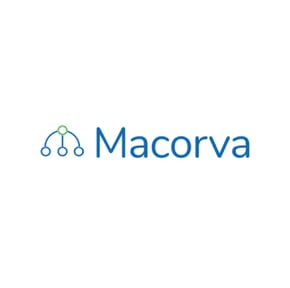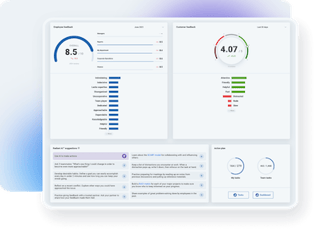
8 Ways Typical Employee Engagement Software is Failing You
According to the most recent Gallup data, global workplace engagement has dropped to 30% in 2024, an 11-year low. Company leaders naturally seek employee feedback to address the issue. However, not all employee engagement software can effectively track or improve engagement. Many programs lack insights related to low engagement, such as turnover, absenteeism, and other vital performance metrics.
Employee engagement strategies need to evolve to address current challenges. To offer a streamlined method of collecting and analyzing employee feedback, modern employee engagement software provides anonymous feedback collection, centralized dashboards, and real-time feedback loops. Instead of helping your business increase engagement, your current employee engagement software may be impeding it. Continue reading to learn about eight ways that your current solutions may be failing to meet your engagement goals.
Lacks Real-Time Feedback Mechanisms
A system of ongoing feedback helps managers keep up with changes in employee expectations, such as new career goals, confusion over a company policy, or a lack of confidence concerning their recent performance. Real-time feedback mechanisms and AI-driven insights create continuous opportunities for feedback that extend the conversation to the issues employees care about, namely, their experiences and their career plans.
When employees feel that they have a well-defined role in their workplace and a voice in their career progression, they feel more empowered and more engaged as a result. Rather than waiting for the biannual review process, ongoing feedback contextualizes successes and shortcomings with recent performance metrics. Employees perform better when they receive frequent, transparent feedback focused on their individual goals. They also gain satisfaction by being able to define their role in the context of their company’s objectives, which makes them less likely to look for new employment.
Macorva EX assembles the real-time feedback tools that businesses need into one transparent dashboard. Managers can measure and track performance over time, conduct actionable employee surveys with the help of personalized questionnaires, and use AI-driven insights to guide employees toward their career goals. With real-time updates, feedback can become more personalized and productive without wasting additional administrative manpower.
Lack of Individual Recognition
Employees need actionable feedback based on recent performance to make productive behavioral changes. This requires an individualized system of feedback updates and a balanced system of ratings that also includes feedback from peers. When employees have the opportunity to both give and receive feedback, they become more accountable for their performance.
A 360-degree feedback loop that includes peer reviews helps employees develop a better view of their development needs and strengthens their opportunities for relationship-building in the workplace. These actionable results are more possible when the feedback is instantaneous since recognition for a task completed six months ago will never have the same impact as feedback from a recent performance.
To address this, it's crucial to implement systems that provide personalized recognition and development plans. By integrating modern feedback strategies and ensuring feedback is timely, organizations can foster a culture of continuous growth and engagement. This approach not only helps employees track their progress but also encourages a more collaborative and supportive work environment.
Limited AI and Machine Learning Integration
Outdated performance management software may fail to integrate modern AI and machine learning solutions into your business’s engagement process. AI-enabled tools like Macorva EX can analyze engagement data to produce actionable insights based on real-time trends. Instead of trying to mount a response to disengagement, your business will be able to proactively prepare for actual engagement trends in your employees.
One example of these AI advancements is the ability to use predictive analytics to identify potential issues and create personalized coaching plans. By predicting career paths and updating relevant performance data in real time, AI tools can save managers valuable time while providing employees with timely, actionable feedback. This approach, which leverages various data sources, helps managers retain talent by offering employees clear career development plans based on their recent performance.
Despite its benefits, AI integration comes with challenges related to oversight, compatibility, and scalability. Not all management software will integrate seamlessly with your existing employee management framework. AI talent is in high demand because businesses recognize the need for experienced management in successful AI integration.
Fails to Measure Key Drivers of Engagement
One-dimensional data analyses limit businesses from understanding their specific engagement gaps by overly focusing on traditional barriers to engagement such as insufficient pay. AI and machine learning identify multidimensional engagement problems in modern workflows, including:
- Insufficient advancement opportunities
- Low worker autonomy
- Fragmented communication workflow
- Low collaboration opportunities
- Disorganized workplace culture
- Unclear workplace ethics
- Unproductive work-life balance
AI can detect patterns in employee feedback such as absenteeism and poor employee-manager relationships to help managers create a workplace environment that addresses their unique engagement issues. 360-degree feedback, including peer feedback, gives employees a voice in their career goals, their managers’ performance, and their workplace environment, driving productivity through increased engagement.
Insufficient Data Privacy and Security Measures
AI integration naturally leads to privacy and security concerns as businesses take a more data-focused approach to analyzing employee trends and predicting behaviors. With the average cost of a data breach rising to $4.45 million in 2024, businesses are right to be concerned that digital workflows may be creating vulnerabilities.
To ensure privacy and anonymity, it is important for businesses to select platforms like Macorva EX that offer advanced encryption and secure data handling practices. Data protection secures not only a business’s bottom line but also its employee trust and customer loyalty. These platforms ensure that data is never used to train AI models and is promptly deleted from generative AI servers after analysis and reporting. Additionally, access to the analytics dashboard can be restricted to only necessary management personnel to prevent unnecessary and potentially unsecured log-ins. Solutions like Macorva EX are customized to align with the specific security and compliance requirements of each facility, ensuring that data remains protected at all times.
Insufficient Support for Hybrid Work Models
Post-pandemic businesses in all industry sectors are adapting to a rising demand for remote and hybrid work models. Hybrid employees face unique challenges to engagement, including a lack of in-person contact with team members, a lack of in-person feedback, and a sense of distance from their workplace environment.
Your engagement platform should utilize communication and collaboration tools that include hybrid and remote workers in workplace culture. Virtual collaboration tools like video conferencing and company messaging software help hybrid employees engage with their coworkers and find their voice, creating a feeling of inclusion that improves employee retention by increasing satisfaction.
For example, Atrium Hospitality, a leading asset management company with over 7,500 employees, used Macorva’s Radiant AI technology to complete over 500 feedback-driven manager actions in just 30 days.This allowed local managers to save administrative time by offloading feedback analysis onto Macorva’s algorithms to focus on more important tasks like individualizing the feedback response to their employees’ needs. In the first month, Atrium achieved the top 25th percentile in engagement in their industry using our modern employee engagement system.
Limited Integration with Other HR Systems
Beyond feedback collection and delivery, engagement software should increase visibility within the workforce to help team leaders identify employees with management potential and those in need of additional training. To achieve this, the software must integrate with existing HR platforms, such as HRIS, as well as the company’s current learning and performance management programs.
By integrating with the current systems, the new engagement platform can streamline HR processes instead of impeding them. Multiple sources of employee performance data can create conflicting feedback that reduces its value to employees, reducing their job satisfaction and encouraging them to find another, more engaging workplace. Performance management software that integrates multiple channels of performance feedback into one central dashboard creates a holistic view of your employee engagement strategies.
A holistic view accounts not only for employee performance but also for peer feedback, manager notes, and more. This approach unifies the employee experience around a common goal while allowing managers to strategize engagement with complete and updated data sets. Managers can help superstars excel by identifying patterns of high performance while offering coaching to those whose metrics point to areas in need of improvement.
Fails to Address Gen Z Workforce Expectations
As Gen Z fully enters the workforce, companies must be willing to adapt to their new definition of engagement, with a focus on well-being, inclusion, and empowerment. In 2023, over 50% of employees, including many from Gen Z, were actively looking for new positions while still in their current one. Employee empowerment could be the key. As SHRM reports, “... when workers are free to make decisions and manage their workday they become more motivated, perform better and work more creatively.”
Typical employee engagement strategies focus on a limited question bank to find the degree of employee disengagement without identifying at-risk individuals, predicting generational trends, or providing actionable solutions. Integrating AI in employee engagement allows businesses to proactively address engagement by predicting employee behavior and responding with holistic solutions.
One particular area where AI can make a significant impact is in addressing the low retention rates among the Gen Z workforce. Low employee retention among the Gen Z workforce is often caused by a perception of managerial bias, a lack of collaboration opportunities, feelings of exclusion, and a lack of career advancement. Gen Z workers focus on individual career development, perceiving their workplace in terms of opportunities for personal growth. They look for technological advancements in their workplace as they strive to work for forward-thinking businesses with modern strategies, including DEI initiatives, sustainability practices, and employee empowerment.
Modern employee engagement software can identify these needs from feedback and help team leaders create an environment that satisfies the needs of a multigenerational workforce. Macorva’s 360-degree feedback system allows managers to focus on each worker’s career development without devoting thousands of man-hours to sourcing the analytics. AI-driven insights help turn feedback into the actionable growth opportunities that the Gen Z workforce craves, raising their investment in their company’s goals and lowering their perceptions of managerial bias.
Lack of Holistic Well-Being Support
With employee disengagement costing businesses nearly $2 trillion every year in lost productivity, employers need ways to recognize the signs of employee stagnation before they impact their bottom line. Holistic well-being support considers all aspects of employee well-being when planning projects, assessing performance, and delivering feedback.
As defined by SHRM, employee wellness is made of 8 parts:
- Emotional wellness
- Physical wellness
- Financial wellness
- Social wellness
- Occupational wellness
- Intellectual wellness
- Spiritual wellness
- Environmental wellness
Rather than offer separate programs for each type of wellness, businesses that take a holistic approach to employee well-being can use feedback as a multi-pronged approach to encourage improvement. For example, personalized career development plans that give employees feelings of autonomy and career satisfaction can overlap with many of the wellness types.
By analyzing feedback, AI-enabled tools like Macorva EX can take holistic employee wellness to the next level by identifying wellness gaps in feedback trend analyses and offering actionable solutions. For example, by identifying a lack of social and emotional wellness, managers can create virtual team-building activities and distribute them directly through the system.
Given the evolving needs of a modern workforce, it's clear that traditional employee engagement software often falls short. From lacking real-time feedback mechanisms and individual recognition to insufficient support for hybrid work models and holistic well-being, these shortcomings can significantly impact engagement and productivity. By recognizing these gaps, businesses can explore advanced solutions that integrate AI and real-time analytics to provide comprehensive support and actionable insights.
Contact Macorva to Bring Your Employee Engagement Software Solutions Into the 21st Century
Modern employee engagement software includes AI-enabled data analysis that supplies managers with real-time, multidirectional feedback, allowing them to engage individuals, develop 360-degree feedback strategies, and meet modern standards for DEI support.
No matter how advanced the program, integration with existing HR systems is key to the success of new employee engagement initiatives. Contact Macorva and request a demo to learn how our systems can seamlessly integrate with your current engagement workflow to help your managers increase productivity, engagement, and retention rates among a multigenerational workforce.

Editors note: this blog was originally published in June 2019 and has been updated for accuracy and comprehensiveness.







.png?width=790&height=255&name=MacorvaGuidetoEmployeeStandouts_700x225%20(1).png)

